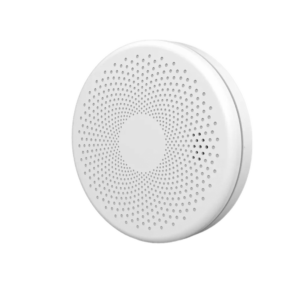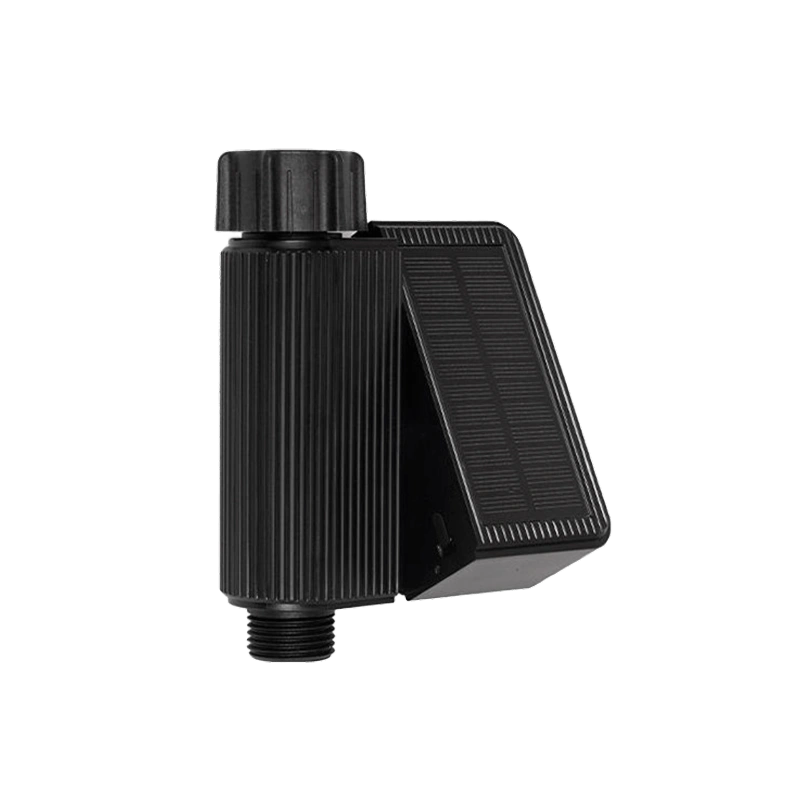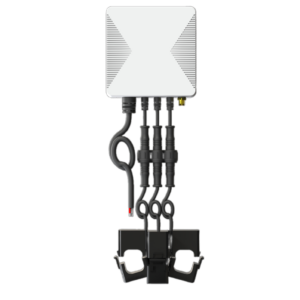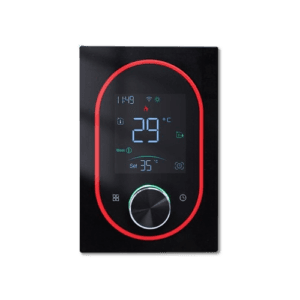今日のハイパーコネクテッド時代では、家庭のエネルギー管理もはや単なる流行語ではなく、家庭が電力消費を最適化するための重要な枠組みとなっています。スマートエネルギーソリューション、ブレークスルーIoTベースのエネルギーシステム、そしてますます推進されている再生可能エネルギーの統合業界全体が前例のないスピードで進化しています。この進化は、エネルギー効率対策を講じることで、現代の住宅はより環境に配慮するだけでなく、より費用対効果の高いものになります。この詳細なガイドでは、住宅エネルギー管理の基礎概念、技術、市場動向、そして課題を探求します。さらに、消費者と業界関係者が協力して、より持続可能でインテリジェントなエネルギーの未来を築く方法についても考察します。
によると、国際エネルギー機関(IEA)住宅の建物はほぼ25%世界の電力消費量の約半分を占めています。この驚くべき数字は、効率的なエネルギーシステムを導入することの重要性を強調しています。家庭のエネルギー管理システム。電力需要の増加に伴い、特に急速に発展している地域では、温室効果ガス排出量も急増しています。包括的な家庭向けエネルギー戦略を実施することで、二酸化炭素排出量を削減できるだけでなく、消費者にとって目に見えるコスト削減にもつながります。
人気の高まり再生可能エネルギーの統合太陽光パネル、風力タービン、蓄電池システムなどの技術は、住宅所有者がクリーンエネルギーを生産・貯蔵する能力を高めています。一方で、スマートエネルギーソリューション燃料となるIoTベースのエネルギーシステム様々な家庭用機器をリアルタイムで監視・制御できます。再生可能エネルギーとインテリジェント制御を組み合わせることで、住宅所有者はエネルギー利用を最適化し、光熱費を削減し、環境への影響を最小限に抑えることができます。
なぜそれが重要なのか

- 環境の持続可能性: 効率的なエネルギー使用は直接的に排出量の削減につながります。
- コスト削減: エネルギー消費を監視することで非効率性を特定し、光熱費を削減します。
- グリッドの安定性: 適切に管理された家庭では電力網への負担が軽減され、ピーク需要のバランスを保つことができます。
- エネルギー自立: 太陽光パネルとバッテリーを備えた住宅では、部分的または完全なエネルギー自給自足を実現できます。
エネルギー管理を変革する主要技術
スマートメーターとリアルタイム監視
スマートメーターは家庭のエネルギー管理これらのデバイスは電力消費に関するリアルタイムのデータを提供するため、住宅所有者は使用パターンを追跡し、無駄な行動を特定することができます。公益事業会社また、詳細なデータにアクセスすることで、負荷分散と計画に役立つメリットも得られます。
- 特徴:
- インターバル計測(例:15分間隔)
- ユーティリティプロバイダーとの双方向コミュニケーション
- リモートファームウェアアップデート
- 利点:
- 即時の消費インサイト
- 自動請求と手動メーター読み取りの削減
- 動的価格設定モデル(時間帯別料金)の可能性
一部の地域では、政府やエネルギー会社がスマートメーターの設置に対して補助金や割引を提供しており、コスト意識の高い住宅所有者にとって魅力的な提案となっています。
太陽エネルギーと蓄電システム
再生可能エネルギーの統合過去10年間で太陽光発電(PV)設備が環境に優しいソリューションのトップに躍り出たことで、太陽光発電は大きな注目を集めています。太陽光パネルとリチウムイオン電池などのエネルギー貯蔵システム(ESS)を組み合わせることで、家庭では日照時間のピーク時に発電された余剰電力を回収し、特に夜間や需要が高まる時間帯に活用することができます。
- 太陽光発電パネル: 太陽光を直接電気に変換します。
- エネルギー貯蔵システム(ESS): オフピーク時の消費に備えて余剰の太陽エネルギーを蓄えます。
- インバーター: 太陽光パネルからの直流電流 (DC) を家庭で使用される交流電流 (AC) に変換します。
財務および環境への影響
- 投資収益率(ROI): 初期設置費用は高額になる可能性があるものの、太陽光パネル価格の下落や様々な税制優遇措置ROI を加速します。
- 二酸化炭素排出量の削減: 太陽光発電による 1 キロワット時 (kWh) の電力は、対応する化石燃料による 1 kWh を相殺します。
ブルームバーグNEFによると太陽光発電モジュールのコストは2010年以降80%以上低下しており、多くの住宅所有者にとってますます現実的な解決策となっています。エネルギー効率利益。
車両から電力網へ(V2G)
もう一つのエキサイティングなイノベーションは車両から電力網へ(V2G)電気自動車(EV)を移動型のエネルギー貯蔵ユニットとして利用する技術です。EVは需要の少ない時間帯(通常は夜間)にエネルギーを貯蔵し、ピーク時に電力網または家庭に放出することができます。EVバッテリーのこの動的な利用は、より安定した電力網を確保すると同時に、EVオーナーにさらなる収益源やコスト削減をもたらします。
- 双方向充電: 車からグリッドへ、またその逆のエネルギーの流れを可能にします。
- スマートな統合IoT ベースのコントローラーは、リアルタイムのグリッド信号と電気料金に基づいて、充電または放電の最適な時間を決定します。
- ピークシェービング: 需要が集中する時間帯の電力網への負担を軽減します。
エネルギー最適化におけるAIと機械学習
モダンな家庭のエネルギー管理システムは頻繁に組み込む人工知能(AI)and機械学習(ML)消費パターンと天気予報を分析するアルゴリズム。これらの知見に基づき、将来のエネルギー使用量を予測し、システムパフォーマンスを自動的に最適化します。
- 予測分析AI モデルは、履歴データと温度や湿度などのリアルタイム入力に基づいて、毎日または毎週のエネルギー需要を予測できます。
- 適応制御: 機械学習アルゴリズムがエネルギー設定を動的に調整し、無駄を最小限に抑えます。
- 障害検出と診断: 機器のパフォーマンスの異常 (HVAC システムの故障など) を自動的に識別し、住宅所有者またはサービス プロバイダーに通知します。
AI主導の洞察を活用することで、住宅所有者はエネルギーの無駄を最大で20%、発表された研究によると、クリーナープロダクションジャーナル.
市場動向と世界的展望
住宅用太陽光発電の成長
住宅用太陽光発電の導入は世界的に急増しています。ウッド・マッケンジー米国の住宅用太陽光発電市場だけでも、3ギガワット2025年までに年間生産能力の2倍に拡大する見込みです。ヨーロッパ、オーストラリア、アジアの一部でも同様の拡大が見られ、再生可能エネルギーの統合andスマートエネルギーソリューション.
スマートソリューションの採用率
- 北米: インテリジェントサーモスタット(Nest、Ecobeeなど)の普及率が高く、より高度なサーモスタットの市場が生まれています。IoTベースのエネルギーシステム.
- ヨーロッパ: 次のような政策欧州グリーンディールスマートメーターと分散型エネルギーリソース(DER)の導入を加速しています。
- アジア太平洋急速な都市化とスマートフォンの普及により、家庭のエネルギー管理ただし、規制の枠組みは国によって大きく異なります。
経済的インセンティブと政策転換
政府のインセンティブは促進に重要な役割を果たしている家庭のエネルギー管理税の還付、ネットメータリングプログラム、低金利融資プランは、再生可能エネルギーの統合システム。例えば、米国投資税額控除(ITC)住宅用太陽光発電設備に対して26%の税額控除が提供されます。ドイツ、オーストラリア、日本などの国では、同様の、あるいはさらに手厚い優遇措置が設けられています。
実際のアプリケーションとケーススタディ
一戸建て住宅
ケーススタディカリフォルニア州の郊外の家庭では、家庭のエネルギー管理屋上ソーラーパネルとバッテリーパックを統合したシステム。リアルタイムデータ分析により、このシステムは太陽光発電のピーク時に高エネルギー消費作業(例:食器洗い機や洗濯機の稼働)をスケジュールします。その結果、この一家は年間の電気代を約10%削減しました。40%さらに、余剰電力を送電網に送り返すことに対して電力会社からクレジットも受け取りました。
重要なポイント:
- 最適化されたスケジュールにより、ピーク負荷料金が削減されます。
- バッテリー システムを統合すると、停電時にバックアップ電源が提供されます。
- リアルタイムの監視と自動化により、全体的なユーザー エクスペリエンスが向上します。
コミュニティレベルのマイクログリッド
コミュニティマイクログリッドこれは、地域的なエネルギー自立に向けた一歩前進です。一部の地域では、複数の住宅が共同でマイクログリッドを共有し、太陽光パネルやバッテリーバンクなどのリソースを共有しています。中央制御システム電力網の相互接続を管理しながら、各家庭間で電力を効率的に分配します。
例ニューヨーク州ブルックリンで実施されているパイロットプロジェクトでは、ブロックチェーン技術を活用し、屋上太陽光発電システムを持つ近隣住民間でのピアツーピア電力取引を促進しています。住民は地域社会内で余剰電力を売買できるため、従来の公共サービスへの依存度が大幅に軽減されます。
利点:
- 大規模停電時の回復力が強化されます。
- 局所的な制御により伝送損失が削減されます。
- 革新的な課金モデル(P2P エネルギー取引)の可能性。
住宅エネルギー管理システム導入の課題
明らかな利点があるにもかかわらずスマートエネルギーソリューションandIoTベースのエネルギーシステムいくつかの障害が残っています。
セキュリティとデータプライバシー
生成される膨大な量のデータ家庭のエネルギー管理システムは重大なプライバシーの懸念を引き起こします。適切に保護されていない場合、個人の使用パターンが悪用される可能性があります。機密データをハッキングや不正アクセスから保護するには、堅牢なサイバーセキュリティフレームワークが不可欠です。
クロスプラットフォームの互換性
メーカーは独自の通信プロトコルやプラットフォームを開発することが多く、異なるデバイス間のシームレスな統合を妨げています。様々なブランドの新しい太陽光発電インバータ、バッテリーシステム、EV充電器の設置を検討している住宅所有者にとって、相互接続性の確保は大きな課題となる可能性があります。
機器の信頼性とメンテナンス
高度なIoTセンサーやデバイスは、これまでにない制御と監視機能を提供する一方で、新たな障害点も生み出します。スマートメーター、インバーター、バッテリーシステムの定期的なメンテナンスは、電力供給の中断を防ぐために不可欠です。エネルギー効率利益。
通信プロトコルの標準化
エネルギー管理効果的なオーケストレーションを実現するためには、ソリューションは標準化された方法で相互に連携する必要があります。OpenADRアライアンスそしてジグビーアライアンスオープンスタンダードの策定に取り組んでいますが、普遍的な採用はまだ実現していません。一貫したプロトコルが確立されるまで、相互運用性は依然として困難な課題です。
実証済みのソリューションと新たな機会
5Gとエッジコンピューティングの活用
次世代ネットワーク5Gリアルタイムのエネルギー管理に不可欠な低遅延接続と高いデータスループットを実現します。さらに、エッジコンピューティング集中型のクラウド サーバーではなくソースの近くでデータを処理することで、応答時間が短縮され、帯域幅の使用量が減少します。
- 地域における意思決定: スマートインバーターやサーモスタットは、クラウドベースのコマンドを待たずに瞬時に判断を下すことができます。
- ネットワーク効率エッジ コンピューティングはデータ処理の負荷を軽減し、中央サーバーのトラフィックを削減します。
- 強化されたセキュリティ: ローカル暗号化とデータストレージにより、大規模なデータ侵害のリスクを最小限に抑えます。
政策と消費者意識
気候変動の影響がより明らかになるにつれ、受け入れようとする政治的、社会的意志が家庭のエネルギー管理多くの政府は送電網の近代化への投資を増やし、再生可能エネルギーの統合住宅所有者は、コストメリットをより意識するようになり、エネルギー効率地球のためだけでなく、お財布のためにも。
視覚的な概要: エネルギーの流れとシステムアーキテクチャ
以下は簡略化した人魚典型的なフローチャート家庭のエネルギー管理設定:
flowchart LR A[Smart Meter] --> B[Home Energy Management Controller] B --> C[Appliances & HVAC] B --> D[Battery Storage] B --> E[EV Charging Station] D --> F[Renewable Source: Solar Panels] E --> G[Grid V2G] F --> B G --> A
伝説:
- スマートメーター: 消費と生産のデータをホームエネルギー管理コントローラー.
- 家電製品と空調設備: コントローラから電力を供給するエンドユーザーシステム。
- バッテリーストレージと再生可能エネルギー: クリーンエネルギーを供給し、貯蔵します。
- EV充電ステーションとグリッドV2G: 電気自動車を電力網に接続し、双方向のエネルギー転送を可能にします。
人気のスマートエネルギーソリューションの比較分析
市場をより深く理解するために、簡単に見てみましょう比較表さまざまなソリューションとその主な機能を紹介します。
| 解決 | 主な機能 | 注目すべき機能 | おおよその費用 |
|---|---|---|---|
| ネストサーモスタット | スマート HVAC コントロール | リモートアクセス、AI自動スケジューリング | $129 - $249 |
| テスラ パワーウォール | バッテリーストレージシステム | 大容量リチウムイオン電池、バックアップ電源、リアルタイム監視 | 7,500~9,000ドル(設置費を除く) |
| ソーラーエッジインバータ | 太陽エネルギーの最適化 | MPPT技術、モジュールレベルの監視 | $1,000 - $2,000 |
| エンフェーズIQ8 | 太陽光発電用マイクロインバータ | 安全性の向上、リアルタイムデータ、モジュール設計 | モジュールあたり150~200ドル |
| ウォールボックス クエーサー | 双方向EV充電器 | V2Gサポート、スマートスケジューリング | $4,000 - $5,000 |
注記:
- コストは地域、設置料金、規制上の優遇措置によって異なります。
- 次のような機能IoTベースのエネルギーシステム統合と高度な分析には追加のサブスクリプション料金がかかる場合があります。
将来展望:IoTベースの完全統合エネルギーシステムに向けて
IoT技術が成熟するにつれて、完全に自律的な家庭のエネルギー管理エコシステムが現実に近づいています。ビッグデータ分析,5GそしてAI消費と貯蔵の瞬時の調整が可能になり、先進的なバッテリー化学(固体電池) により、ストレージ容量と安全性が劇的に向上します。
潜在的なブレークスルー
- 水素燃料電池住宅用バックアップ電源用。
- ブロックチェーン安全なピアツーピアのエネルギー取引を実現します。
- デジタルツインエネルギー使用シナリオをシミュレートし、現実世界の試行錯誤を削減します。
長期的な影響
- 分散型エネルギーグリッドマイクログリッドとプロシューマー(生産者 + 消費者)の台頭により、従来のユーティリティ モデルが再編成されます。
- 持続可能なコミュニティ: 将来のスマートシティは大規模なIoTベースのエネルギーシステム住宅と商業施設の電力使用を同時に最適化します。
- データ駆動型ポリシー政府はリアルタイムの消費データを利用して、より動的なエネルギー規制を策定し、エネルギー効率透明な方法で。
私たちはエネルギー革命の瀬戸際に立っており、家庭のエネルギー管理急速に議論の中心的話題になりつつあるスマートエネルギーソリューション。 からIoTベースのエネルギーシステム高度なバッテリー技術に関するリアルタイムの洞察を提供し、再生可能エネルギーの統合よりスマートで持続可能な家庭内電力利用の可能性は計り知れません。しかし、この可能性を最大限に実現するには、政策立案者、技術提供者、そしてエンドユーザーが、標準化、サイバーセキュリティ、そして公平なインセンティブプログラムにおいて協力する必要があります。
研究開発への投資、エッジコンピューティングと5Gの普及は、私たちの家が自給自足になるだけでなく、より回復力があり安定した電力網に積極的に貢献する近い将来を告げています。エネルギー効率対策とイノベーションの促進再生可能エネルギーの統合そうすれば、私たちは集団として、迫り来る気候変動の脅威を緩和するとともに、エネルギーの手頃な価格と信頼性を確保することに向けて大きな一歩を踏み出すことができます。
旅は始まり、青写真が形になりつつあります。もはや疑問は「これらの技術が私たちの家庭を持続可能でインテリジェントな電力ハブに変えるかどうか」ではなく、「どれだけ早く」変わるかです。消費者にとって、家庭のエネルギー管理システムは環境に配慮した選択であるだけでなく、長期的なコスト削減、自立、そして将来の世代のためにより緑豊かな地球を創造するための賢明な投資でもあります。



